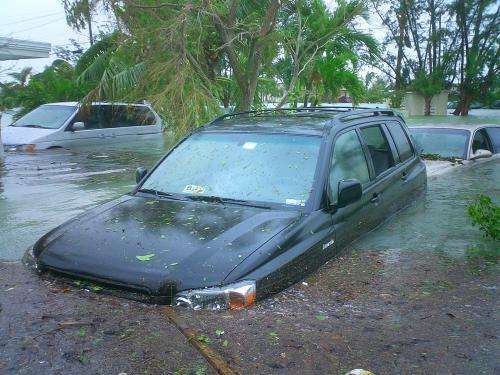Global Research Finds Long-Term Heart Risks Linked to Severe Bleeding After Birth

Severe postpartum hemorrhage significantly increases women's risk of cardiovascular diseases over the long term, with risks lasting up to 15 years after childbirth, according to a large international study.
A comprehensive international study has revealed that women who experience severe postpartum hemorrhage are at a significantly increased risk of developing cardiovascular diseases over the long term. Analyzing data from over 9.7 million women across Europe, North America, and Asia, researchers found that the health consequences can persist for up to 15 years after childbirth.
Postpartum hemorrhage (PPH), which affects roughly 14 million women annually and accounts for more than 20% of maternal deaths worldwide, has traditionally been viewed as an immediate emergency. However, recent evidence suggests that its effects on blood loss can have lasting impacts on cardiovascular health. The systematic review and meta-analysis encompassed ten studies published up to 2024, with follow-up periods ranging from three to 31 years. The studies included diverse populations from countries such as South Korea, the UK, Sweden, Canada, France, and the US.
Findings indicate that women who suffer severe PPH, especially those requiring blood transfusions, have a 1.76-fold higher risk of cardiovascular conditions like heart failure, stroke, and ischemic heart disease. They are also 2.10 times more likely to experience thromboembolic events like blood clots. The risk is particularly elevated during the first year postpartum but can extend for more than a decade, especially among women with high blood pressure complications like preeclampsia.
Lead researcher Dr. Manggala Pasca Wardhana emphasizes the importance of viewing postpartum care as a continuous process, extending beyond delivery. She suggests that routine cardiovascular screening for women who had severe postpartum bleeding could facilitate early detection and better management of potential health issues.
The research underscores the need for evolving clinical guidelines to include the long-term monitoring of women who experience PPH. It also calls for further research to understand the mechanisms linking severe blood loss at childbirth with cardiovascular diseases and to develop targeted prevention and treatment strategies.
While most data comes from high-income countries, the study highlights the global relevance of addressing PPH’s long-term effects, especially in low- and middle-income countries where PPH prevalence and healthcare access disparities are more pronounced. Recognizing these long-term risks can pave the way for more comprehensive maternal health policies and interventions.
Source: https://medicalxpress.com/news/2025-06-global-links-severe-childbirth-cardiovascular.html
Stay Updated with Mia's Feed
Get the latest health & wellness insights delivered straight to your inbox.
Related Articles
Study Highlights How Flooding Affects Older Adults' Health
A comprehensive study reveals how major flooding events significantly impact the health of adults aged 65 and older, increasing risks of skin, nervous system, and injury-related conditions, with disparities influenced by community demographics.
Innovative Dental Flosser with Built-In Stress Monitoring Sensor
A groundbreaking dental floss pick now features a built-in sensor capable of monitoring cortisol levels, offering a convenient and non-invasive method for at-home stress detection.
Research Uncovers Role of Spinal Ligaments in Scoliosis Development
New research highlights the crucial role of spinal ligament development in understanding scoliosis formation, using chick embryo models to uncover structural changes linked to spinal deformities.
Impact of Legislative Changes Threatening Healthcare Access for Immigrants in Minnesota
Legislative disputes in Minnesota threaten to withdraw healthcare access for undocumented immigrants amid growing enrollment and community concern. Read more about the ongoing debate affecting vulnerable populations.



